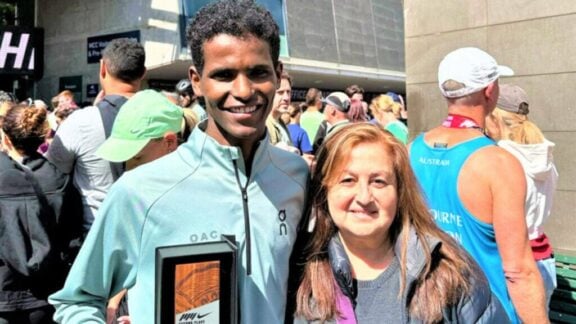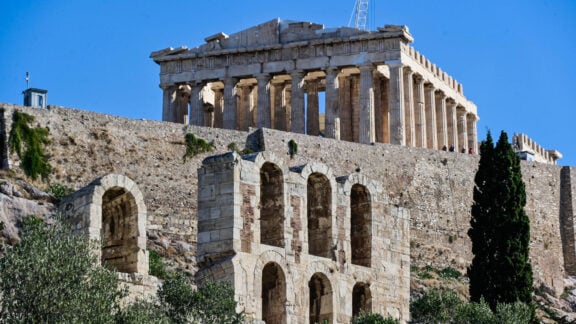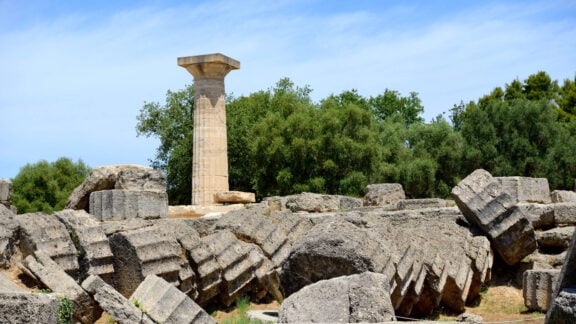A decade is a long time, and in such a period much has happened, not least a quarter of it was in the throes of a global pandemic (whose presence lingers).
I lived in Athens as a repatriate banker at the height of the pre-Lehman Brothers/Greek Crisis era, along with dozens of trips when we lived in the UK and Serbia. My last trip was in 2013.
I arrived via Atlanta to be picked up by Spyro, one of my closest friends, who studied with me in law school, and we quickly sped via the Attiki Odos (spotless and privately owned) to Neo Psychiko. It was as if the years evaporated. The same dense homes, some a bit shabby, many more well appointed to the degree possible in Athenian apartments, with an assortment of cars parked in the sidewalk-less streets.
I immediately requested that we prepare for Plateia Eleftherias (Freedom Square) a few minutes from his house, where we ate at a restaurant (Oi Foitites—The Students). Suddenly, the linguistic and cultural accoutrements of my past Athenian residence returned—enabled, perhaps, by pure adrenaline and a very diverse offering of tsipouro with a table full of the fundamentals of the Greek meal—salad, feta, horta (dandelion greens) and a series of fish dishes.
The whole suburb displayed a sturdy middle-class resilience in the face of depressions, pandemics, and rapid technological and demographic pressures, testimony to the Greek family structure and to the quiet legacy of generations of the Greek merchant marine. I had been hosting courses on resilience and sustainability as a university professor, and here on a slightly shabby square in a modest yet delicious and nutritious restaurant, with wry, humorous service—I found resilience in action.
I am of course aware that a relatively wealthy suburb of Athens is hardly a yardstick for the nation, and that any number of conversations revealed a city under siege by the “Airbnb phenomenon” which pushed out locals in favour of short-term rentals.
This was perhaps the greatest example of globalization in action—income inequality is a global scourge. I have plenty of similar stories here in the United States.

To traverse the city, I relied on the Athens Metro, which I remembered as clean and efficient, though relatively limited in its scope. Here too, while the stations and trains showed a certain aging, the scope of the metro had increased at a healthy pace, including going to the Dimotiko Theatro in a very cleaned up Piraeus. Nearly half of the commuters still wore masks in these closed quarters, a sign of major cultural change and a nod to a civic mindedness that in a Greek context was particularly refreshing.
I emerged at Syntagma Square expecting repeats of the mid-2010s, with graffiti and sit ins and instead found electioneering stalls and a multiethnic crowd of residents and tourists. Here I was able to affirm my voter registration for the May 21 election, all digitally and in under a minute.

The first, and most obvious stop, was Agia Dynami Church, a squat 17th Century church from the Ottoman era now framed by the concrete columns and girders of what was once a government building and now a gentrified hotel. The Church had also gentrified, newly tuckpointed but the interior still breathed the soul of Byzantium in captivity. We followed with Mitropoleos Square for its exquisite Byzantine church and a quick homage to the statue of Constantine Paleologos, as ever vigilant and my personal hero, before reviewing a whirlwind of bars, shops, and restaurants.
While fuelled by tourism and an influx of real estate money, I again witness a façade of activity and entrepreneurialism—a plethora of shops high and low, of restaurants, cafes, and bars, spilling onto the narrow sidewalks and streets, a chaos that was yet harmonious and again displayed a gritty resilience. This Athens possessed an urbanity and vibe that the Athens of a decade ago lacked, and even the “rich” Athens in the first decade of the new millennium could not match it.
Despite the greater diversity of fare and demographics, there were far more Greek products than in the past, as if the soft power of Greekness was coming into its own. Yet it was Piraeus, Athens’ port, that most moved me. Even more than in his natal Hydra, it is Piraeus where I feel my father’s spirit, as he grew up here among fellow islanders, Cretans, Maniates, and Asia Minor refugees.

I remembered Piraeus as hard to love, and a pain to park in, with 1970s mid-rises often evoking the Socialist Realism north of the Greek frontier, but without any semblance of sidewalks or transportation. It was here that I was most impressed. Pedestrianization, trams, and metro relieved some of the tyranny of the automobile that previously plagued the town (and continues to do so in American cities), while among the typical Athenian Polykatoikies (apartments), older buildings and neoclassical structures received a needed facelift and revival as shops and offices. The inhabitants took facts on the ground—personal, historical, and architectural—and created a resilient yet authentic solution. There are plenty of literal and figurative cracks in the pavement, some very serious, yet nonetheless it was a delight to return and to see lemons made, in so many ways, into lemonade.
And nowhere are the lemons as good as in Greece.









